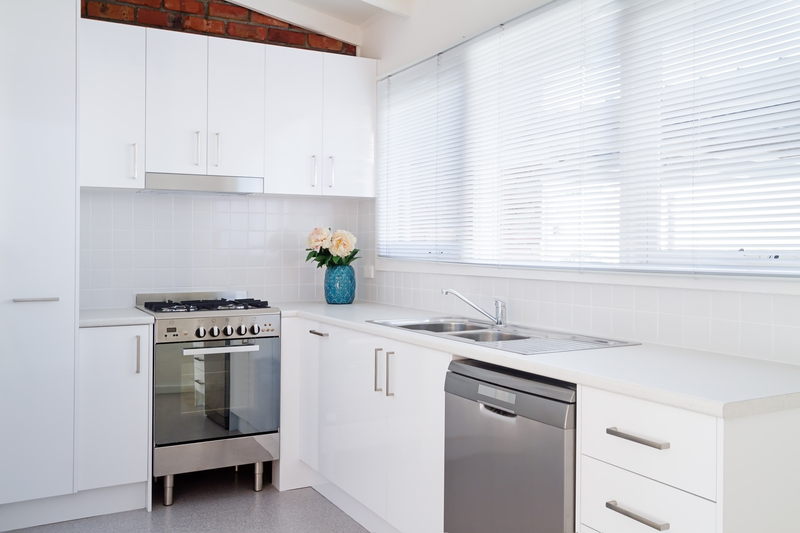Mastering Piano Moves: Understand the Challenges Before You Take on the Task
Moving a piano is often ranked among the most daunting relocation tasks. This is not only due to the instrument's considerable size and weight but also because of its complex design and delicate mechanism. Whether you're contemplating a local move or getting ready to transport your treasured piano across states -- mastering piano moves demands preparation, knowledge, and expertise. This comprehensive guide will walk you through the nuances of relocating a piano, highlighting the major challenges you'll face and offering actionable tips for a smooth, safe transport.
Why Moving a Piano Is Exceptionally Challenging
If you're wondering why people often prefer to hire professional piano movers, here are some key reasons:
- Sheer Weight and Size: Even a small upright piano can weigh over 300 lbs, while grand pianos may top 1,200 lbs.
- Delicate Components: Pianos contain hundreds of sensitive parts -- hammers, strings, pedals -- all prone to damage if not handled properly.
- Irregular Shape: Pianos are bulkier and less uniform than other household items, making them tough to maneuver through doorways or up stairs.
- High Value: Whether antique, modern, or a family heirloom, pianos represent significant financial and emotional investments.
Understanding these challenges is the first step towards mastering piano moving. Let's delve deeper into what makes a piano so tricky to relocate and how you can prepare.

The Anatomy of a Piano: What Makes It So Hard to Move?
Pianos are complex instruments, and their design directly impacts their mobility. Here's what you need to know:
Types of Pianos and Their Moving Challenges
- Upright Pianos: While generally smaller, they are still heavy (300-500 lbs) and have a height that makes tipping hazardous.
- Grand Pianos: These can weigh 600-1,500 lbs. The legs, lid, and pedals all require special handling and may need to be removed for safe movement.
- Spinets and Console Pianos: Although lighter, their delicate mechanisms still require careful cushioning and transportation.
The internal mechanisms of a piano -- including the fragile keys, tension-rich strings, and action components -- are highly susceptible to shocks, incorrect angles, and humidity/temperature changes during a move. Mastering piano moves means being vigilant about these vulnerabilities.
Pre-Move Preparation: Set Yourself Up for Success
Preparation is paramount before you even lift your piano an inch. Consider these vital steps:
Evaluate Your Piano and the Moving Environment
- Measure Your Piano: Know its dimensions and weight. Each type -- upright, baby grand, or concert grand -- poses unique challenges.
- Assess Pathways: Walk the intended path (doorways, hallways, stairs, elevators). Measure all tight squeezes and ensure flooring can support the piano's weight.
- Clear Obstacles: Remove furniture, rugs, or any items in the path. You'll want uninterrupted clearance to avoid accidents.
- Check the Weather: Pianos are sensitive to temperature and humidity, so select the best day possible or prepare proper covers.
Gather the Right Equipment
The right tools are non-negotiable for safe piano moving:
- Piano dolly or skid board -- designed for heavy, irregular loads
- Straps and padding blankets -- to protect and stabilize the piano
- Work gloves -- for grip and hand protection
- Moving ramps -- for stairs or vehicle loading
- Wooden planks or sheets -- for traversing uneven surfaces
Lack of specialized equipment is the top reason many amateurs end up damaging their piano -- or even injuring themselves. Whenever possible, consult with or retain professional piano movers who have access to industry-grade gear.
Teamwork: Never Move a Piano Alone
Attempting to lift or move a piano solo is a recipe for disaster. A basic rule in mastering piano moves is to assemble a strong, coordinated team:
- Minimum Two to Four People: Even a lightweight upright should be managed by at least two people, with larger pianos requiring more.
- Assign Roles: Designate a "lead" responsible for navigation, as well as lifters for different corners or sections.
- Practice Communication: Moving a piano involves intricate turns and balancing -- clear verbal cues are vital.
Essential Steps to Mastering a DIY Piano Move
If you've decided to proceed without professional movers, follow these steps to minimize risk:
1. Prepare the Piano
- Secure the lid and keyboard: Use tape or strap to prevent accidental opening.
- Remove detachable parts: Legs, pedals, and music stands should be taken off and wrapped separately if possible.
- Wrap with blankets: Protect all surfaces with multiple layers, taping the blankets in place.
2. Lifting and Maneuvering the Piano
- Lift -- Don't Drag: Dragging stresses the legs and frame. Always lift when shifting position.
- Keep Upright: Tilting or turning the piano center-upside-down can damage internal components.
- Use Dollies and Ramps: Roll -- never slide -- the instrument, and guide carefully up/down ramps.
3. Navigating Stairs and Tight Spaces
- Assign spotters at top and bottom: These people bear the guiding and balancing responsibility.
- Use moving straps: Maintain control, minimize sudden weight shifts, and reduce risk of dropping.
- Take breaks: Fatigue invites mistakes, which can be tragic with such a heavy, valuable item.
4. Loading and Transport
- Use a loading ramp: Never attempt to lift a piano straight into a vehicle.
- Anchor securely: Employ strong ropes or straps to fasten the piano inside the truck, and prevent any movement.
- Drive with caution: Avoid sudden stops or sharp turns. Slow, smooth transportation reduces all risk.
Risks and Pitfalls: Common Mistakes in Piano Moving
Even with extensive planning, there are pitfalls that consistently trap the unprepared. Recognizing and sidestepping these can help you master piano moves and avoid unnecessary heartache.
Ignoring the Piano's Center of Gravity
The weight distribution in pianos is rarely even. Uprights are top-heavy while grands are awkwardly balanced between the keyboard and the case. Always move with gravity in mind.
Attempting to Move Without Help
Solo attempts almost always result in property damage, injuries, or both. Never underestimate a piano's weight.
Poor Surface Protection
Insufficient padding is a recipe for gouged wood, torn veneer, and scratched paint. Invest in more blankets and tape than you think you'll need.
Forgetting to Plan the Exit and Entrance
Getting stuck halfway up a staircase, or unable to squeeze through a door, can bring your move to a halt. Always plan and measure in advance.
Insurance and Liability: Protecting Your Investment
Pianos are often valuable, irreplaceable assets. Before starting, consider:
- Insurance Coverage: Many home policies don't cover damage during moves. Consult your provider or invest in specialty insurance.
- Professional Mover Liability: Established piano movers are insured -- if you break it, you buy it; if they break it, they fix it.
- Bill of Lading: Always get this legal document from your mover affirming responsibility for your piano during transit.
When to Call the Professionals: Knowing Your Limits
Mastering piano relocation sometimes means admitting when a task is too risky to handle alone. If you:
- Lack experience with heavy objects
- Face multiple stairs, narrow spaces, or sharp turns
- Have a concert or baby grand piano
- Cannot round up enough helpers
...then contracting professional piano movers is almost certainly the safer and more cost-effective choice. The expertise, equipment, and insurance they provide are invaluable when the stakes are high.
Post-Move Piano Care: Ensuring Longevity After the Move
Successfully moved your piano? Your work isn't done yet. Pianos are extremely sensitive to temperature, humidity, and the stress of movement. Here's how to care for your instrument immediately after relocation:
- Allow the piano to adjust to the new environment: Wait at least 24-48 hours before playing or tuning.
- Inspect for damage: Check for loosened legs, cracks, scratches, or detuned notes.
- Schedule a professional tuning: Moves always knock pianos out of tune. Arrange for a certified technician to adjust pitches, regulate action, and inspect for internal damage.
- Choose the right spot: Place the piano away from sunlight, heat vents, and exterior walls to reduce environmental stress.

Master Piano Moves: Top Tips for Success
- Plan meticulously -- measure everything twice and never underestimate obstacles
- Enlist enough help -- teamwork is critical for balance and safety
- Use proper equipment -- never skip out on dollies, straps, or padding
- Be gentle and methodical -- speed invites mistakes, take your time
- When in doubt, hire experts -- piano moving is a skilled profession for a reason
Conclusion: Moving a Piano Is an Art--Master It Thoughtfully
Piano moving mastery goes far beyond heavy lifting. It's about understanding the physical, technical, and emotional value of your instrument. Preparation, the right equipment, teamwork, and respect for the piano's fragility make all the difference. Whether you decide to move your piano yourself, or you trust the professionals, knowing what is involved gives you the confidence to make the right decisions for your treasured instrument. Take the time to master the move -- your piano, and your peace of mind, will thank you.
If you're on the path to relocating your beloved piano, remember: Preparation meets prevention, and expertise equals excellence. Safeguard your investment by studying, planning, and acting with care. Happy moving!